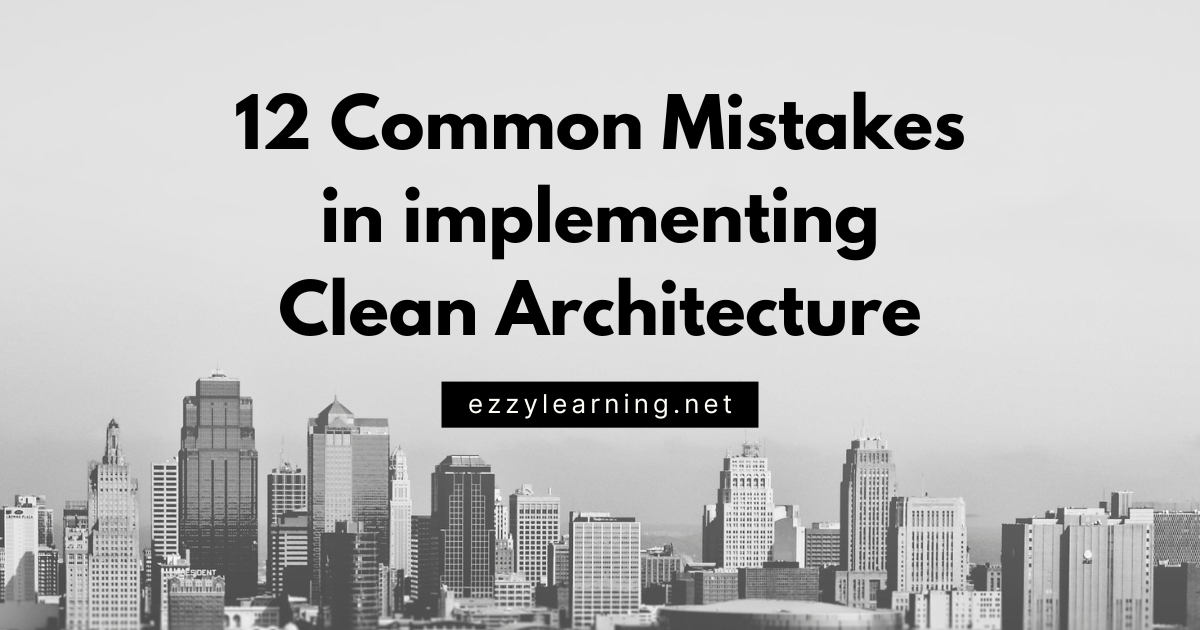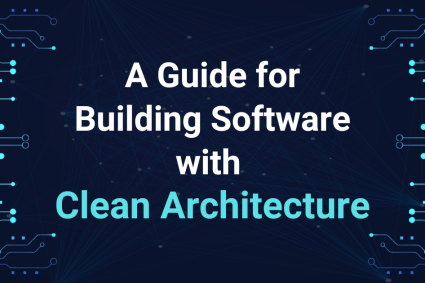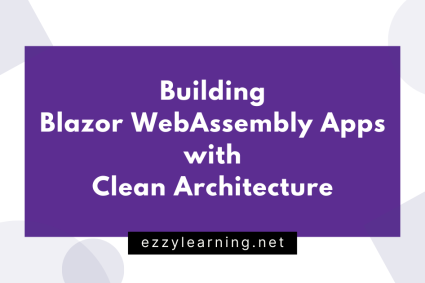Clean Architecture is introduced by Robert C. Martin (also known as Uncle Bob) in 2012 and it has gained popularity in recent years. The aim of clean architecture is to create maintainable, scalable, and flexible software systems. While it provides a solid foundation for building complex applications, there are certain common mistakes that developers might make when implementing Clean Architecture.
Here’s a list of some of these mistakes:
Table of Contents
Overengineering
One of the most common mistakes is overengineering the architecture for simple or small-scale projects. Clean Architecture is most beneficial for large, complex applications, and applying it to smaller projects may lead to unnecessary complexity and development overhead. Developers can introduce lot of abstractions, layers, and patterns that add unnecessary complexity, making the codebase difficult to understand. This not only hinders the development process but also leads to increased maintenance efforts and a steeper learning curve for new team members. Striking the right balance and avoiding overengineering is crucial for taking full advantage of clean architecture.
Ignoring Business Domain
The Domain layers is the center stage of the Clean Architecture and is often known as the Core of the System. Ignoring to deeply understand the domain can lead to incorrect system design and lack of alignment with actual business requirements. Usually, developers become overly focused on the technical aspects of the system while neglecting a deep understanding of the core business logic and requirements. To avoid this pitfall, developers must actively engage with domain experts, fully understand business processes, and ensure that architectural choices are made in line with business goals.
Unclear Boundaries
Clean Architecture relies on the concept of layers and boundaries between them. Failing to establish clear boundaries between the layers can lead to a tangled and less maintainable codebase. Clean architecture emphasizes a strict division between entities such as the presentation layer, application logic, and data storage, fostering modularity and maintainability. However, when the boundaries between these layers are not well-established or are muddled, it can lead to a range of problems. These include difficulty in understanding flow of data, challenges in making changes to one layer without affecting other layers, and reduction in overall adaptability of the architecture.
UI/Framework Dependency
Clean Architecture advocates for the independence of the business logic from UI and frameworks. Failing to achieve this separation can result in tight coupling, making it difficult to change or update one component without affecting others. When UI or framework dependencies seep into the core, it not only makes the codebase rigid and less adaptable to changes but also hinders the potential for independent testing and reusability. The core business logic should ideally be framework-agnostic, enabling it to function independently of the user interface or external libraries.
Overusing Dependency Injection
While dependency injection is a powerful tool for decoupling components and is a crucial concept in Clean Architecture, overusing it can lead to complex and convoluted code. Only apply dependency injection where it genuinely adds value and simplifies the codebase. A thoughtful approach to Dependency Injection within the context of Clean Architecture is essential to create a well-organized and comprehensible codebase.
Ignoring SOLID Principles
Clean Architecture complements SOLID principles (Single Responsibility, Open-Closed, Liskov Substitution, Interface Segregation, Dependency Inversion). When developers ignore these principles, they risk creating tightly coupled components that are difficult to modify and extend as changes in one part of the codebase affect other parts, making it challenging to adapt to evolving requirements.
Misusing Libraries and Frameworks
Using external libraries or frameworks that don’t align with the principles of Clean Architecture might lead to the violation of architectural boundaries and a loss of architectural purity. This occurs when developers excessively rely on external tools without considering how they fit into the overall system design. It’s essential to evaluate whether a particular library aligns with the architectural principles and goals of the project.
Misunderstanding Use Cases
Misunderstanding the concept of use cases and organizing them incorrectly can hinder the clear flow of data and logic through the system. This usually happens when developers misinterpret the primary goals and functionalities of their software system. Instead of accurately identifying and isolating distinct use cases that the application needs to address, they might mix different responsibilities or blur the boundaries between components. To avoid this pitfall, it’s crucial to thoroughly analyze the various use cases, prioritize them, and ensure that each component is structured to serve its specific purpose within the overall system.
Insufficient Testing
Clean Architecture encourages thorough testing of layers and interaction between them and Insufficient testing refers to a mistake where the application’s components and layers are not thoroughly tested to ensure their correctness and reliability that lead to unforeseen bugs and vulnerabilities. To avoid this mistake, it’s essential to establish a robust testing strategy that covers all layers of the architecture, from the innermost business logic to the outermost user interfaces, ensuring that the application functions as intended and maintains its integrity over time.
Ignoring Performance
Overemphasis on abstraction and layering can sometimes lead to performance bottlenecks. Overlooking performance considerations such as database queries, network requests, and algorithm efficiency can result in sluggish response times and inefficient resource utilization which ultimately undermine the user experience. It’s essential to strike a balance between maintainability and performance.
Data Persistence Logic in the Wrong Place
When data persistence logic, such as database access code or storage interactions directly ends up in layers meant for business logic or presentation, it muddles the architecture’s clarity. This mistake can lead to a tightly coupled system that’s harder to maintain and scale. Data access should be abstracted and placed in dedicated repositories or data layer ensuring a clean and modular design.
Lack of Communication and Collaboration
Clean Architecture often involves multiple teams or developers working on different layers. Failing to establish clear communication and collaboration can lead to integration issues and suboptimal results. Collaboration ensures that each layer’s purpose and interactions are well-understood by all stakeholders, fostering a more cohesive and successful implementation of the clean architecture principles.
Conclusion
The appropriateness of Clean Architecture depends on the specific requirements of your project. It’s essential to evaluate the needs and complexity of the application before deciding to adopt Clean Architecture fully.




